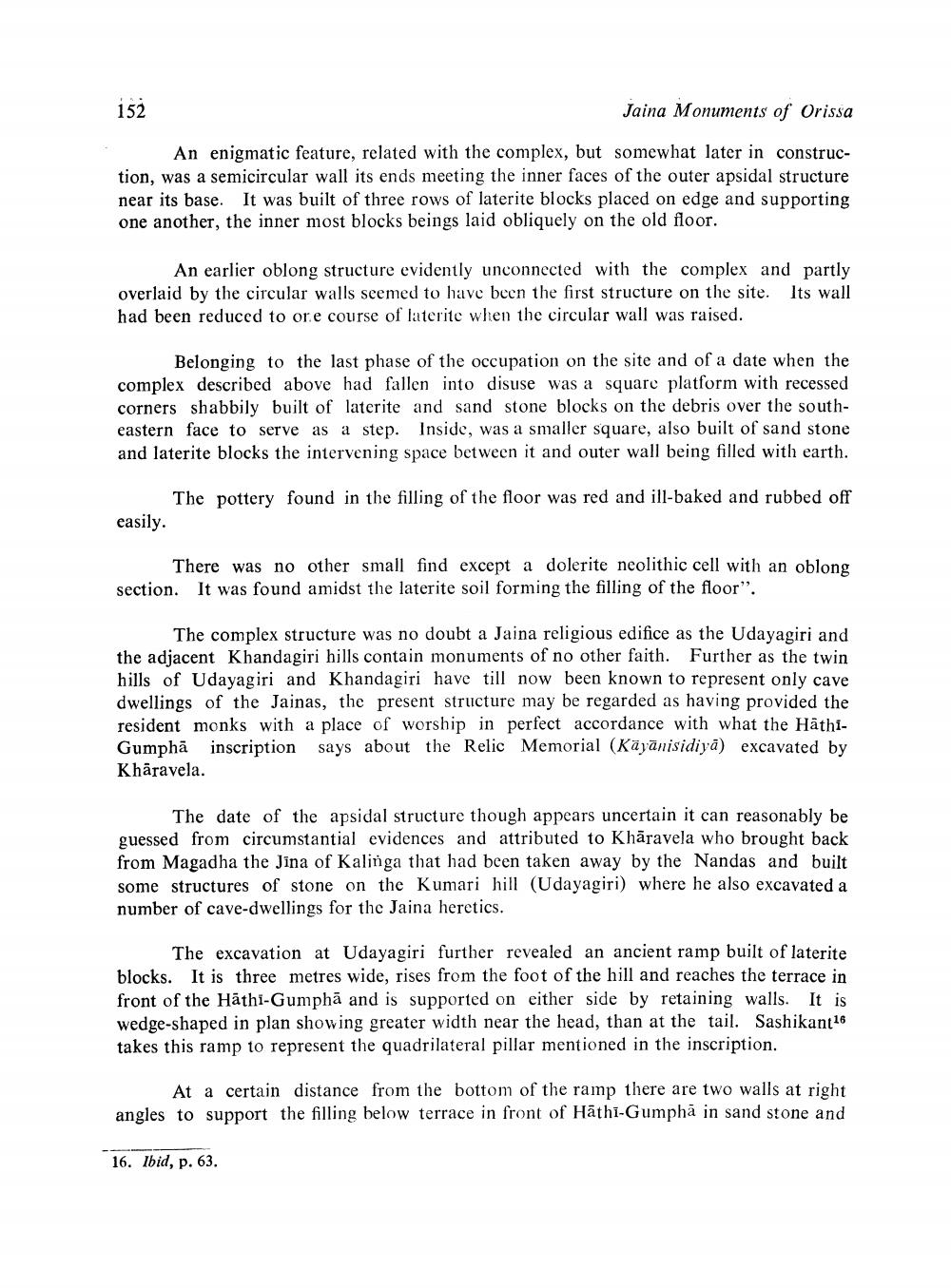________________
152
Jaina Monuments of Orissa
An enigmatic feature, related with the complex, but somewhat later in construction, was a semicircular wall its ends meeting the inner faces of the outer apsidal structure near its base. It was built of three rows of laterite blocks placed on edge and supporting one another, the inner most blocks beings laid obliquely on the old floor.
An earlier oblong structure evidently unconnected with the complex and partly overlaid by the circular walls seemed to have been the first structure on the site. Its wall had been reduced to ore course of laterite when the circular wall was raised.
Belonging to the last phase of the occupation on the site and of a date when the complex described above had fallen into disuse was a square platform with recessed corners shabbily built of laterite and sand stone blocks on the debris over the southeastern face to serve as a step. Inside, was a smaller square, also built of sand stone and laterite blocks the intervening space between it and outer wall being filled with earth.
The pottery found in the filling of the floor was red and ill-baked and rubbed off
easily.
There was no other small find except a dolerite neolithic cell with an oblong section. It was found amidst the laterite soil forming the filling of the floor".
The complex structure was no doubt a Jaina religious edifice as the Udayagiri and the adjacent Khandagiri hills contain monuments of no other faith. Further as the twin hills of Udayagiri and Khandagiri have till now been known to represent only cave dwellings of the Jainas, the present structure may be regarded as having provided the resident monks with a place of worship in perfect accordance with what the HathiGumphā inscription says about the Relic Memorial (Käyānisidiya) excavated by Khāsavela.
The date of the apsidal structure though appears uncertain it can reasonably be guessed from circumstantial evidences and attributed to Khāravela who brought back from Magadha the Jina of Kalinga that had been taken away by the Nandas and built some structures of stone on the Kumari hill (Udayagiri) where he also excavated a number of cave-dwellings for the Jaina heretics.
The excavation at Udayagiri further revealed an ancient ramp built of laterite blocks. It is three metres wide, rises from the foot of the hill and reaches the terrace in front of the Hāthi-Gumphā and is supported on either side by retaining walls. It is wedge-shaped in plan showing greater width near the head, than at the tail. Sashikant16 takes this ramp to represent the quadrilateral pillar mentioned in the inscription.
At a certain distance from the bottom of the ramp there are two walls at right angles to support the filling below terrace in front of Hāthi-Gumph, in sand stone and
16. Ibid, p. 63.




